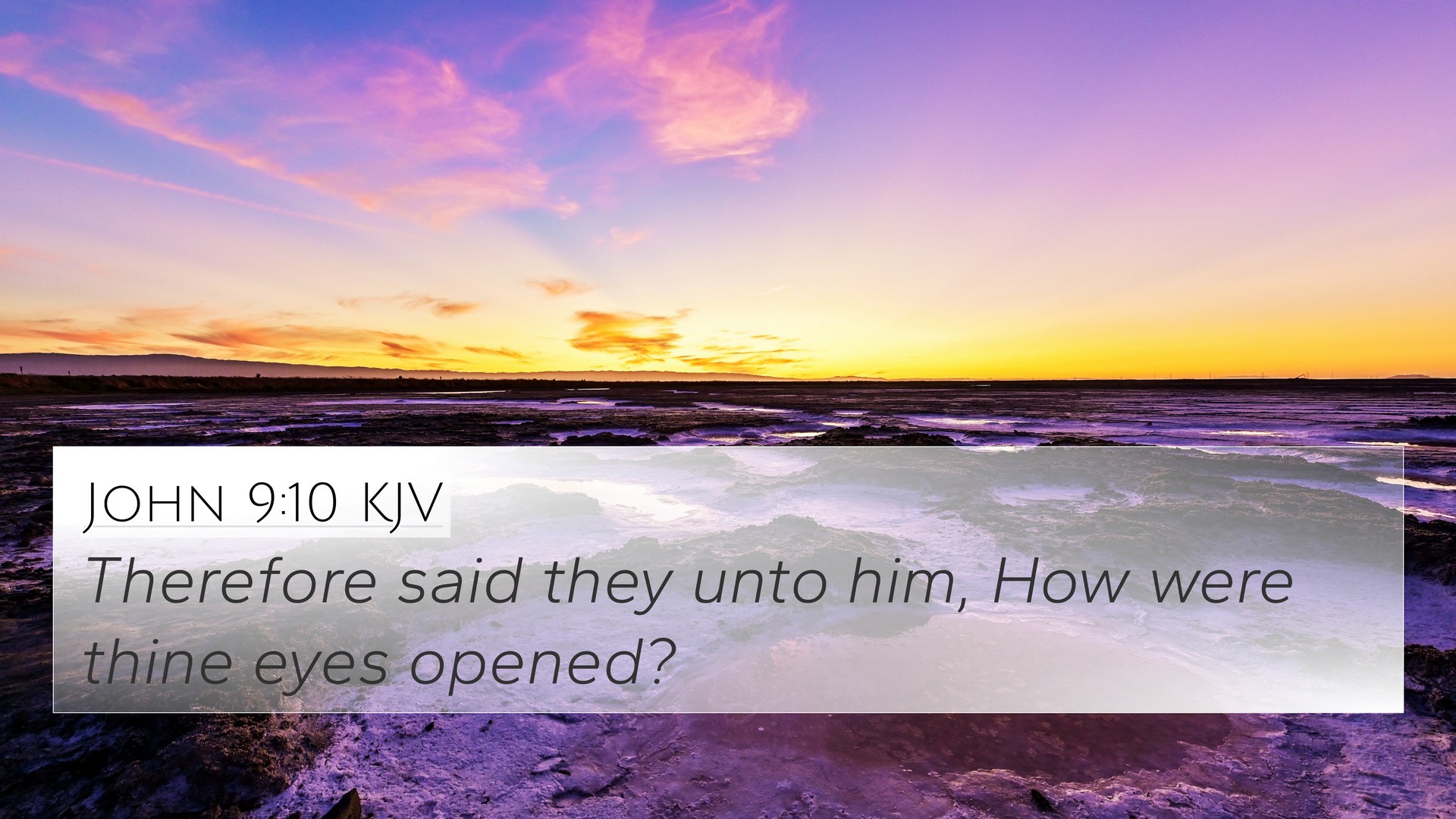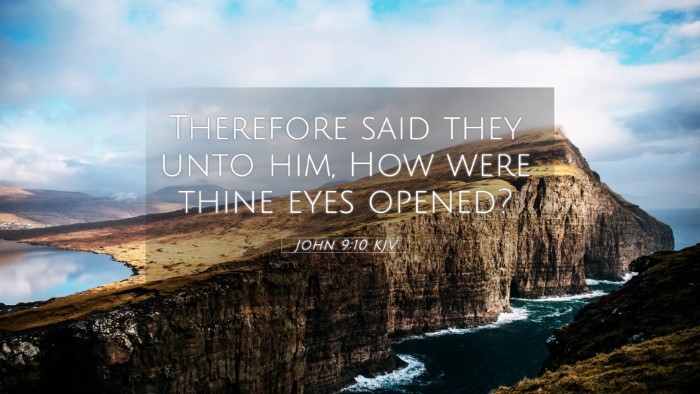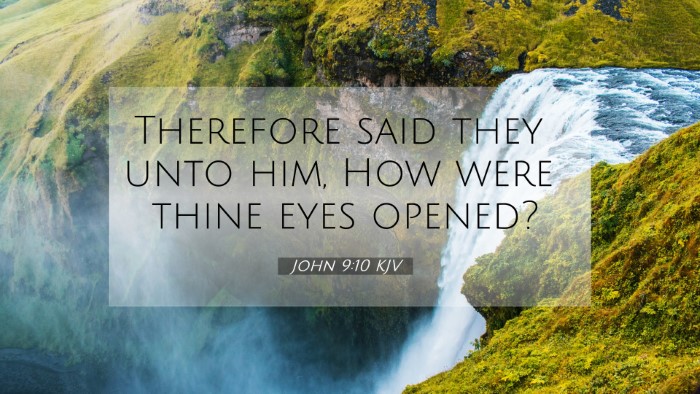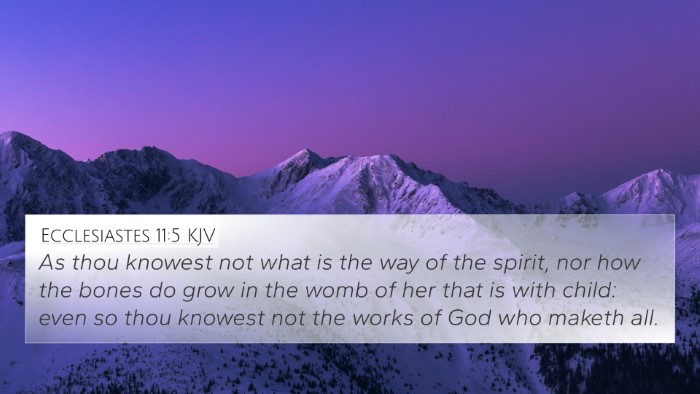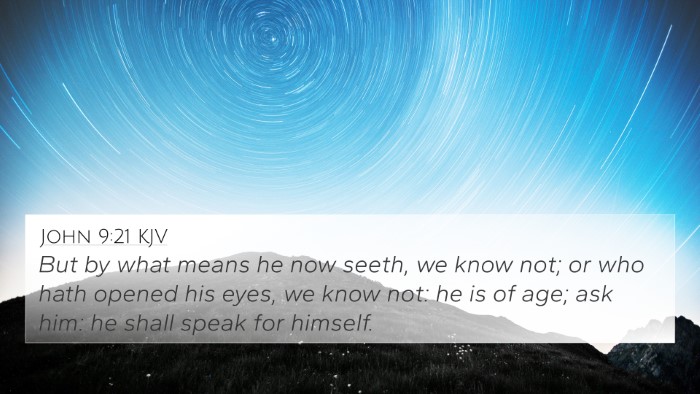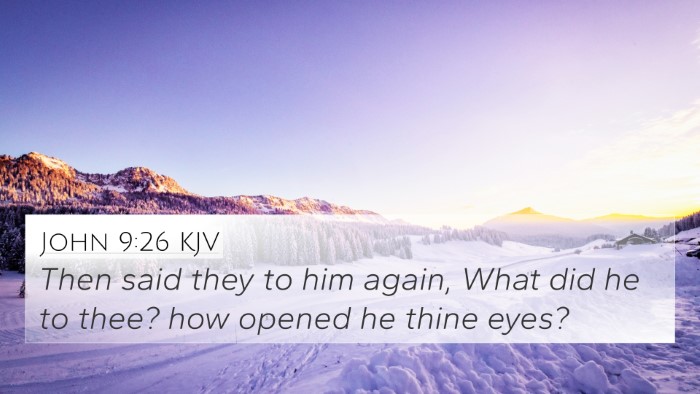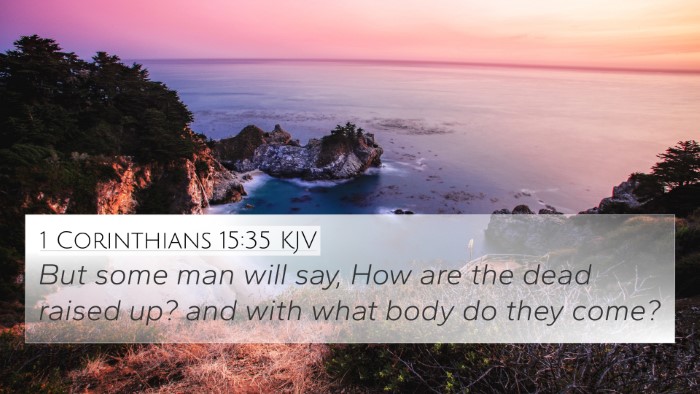Understanding John 9:10
Verse Reference: John 9:10 - "Therefore said they unto him, How were thine eyes opened?"
This verse occurs in the context of the healing of a blind man, which is a significant miracle performed by Jesus. The inquiry from the Pharisees reveals their astonishment and skepticism concerning the miraculous acts of Jesus, a theme prevalent throughout the Gospel of John.
Summarized Meaning and Context
John 9:10 serves as a transitional moment in the narrative following a notable miracle. Here, we delve into the complexities that arise when Jesus challenges existing religious norms, prompting questions and discomfort among the religious leaders. The miracle acts as a catalyst for understanding Christ's divine authority.
Thematic Connections and Cross-References
This verse can be linked to various themes and concepts found throughout the Bible. Below are key connections and cross-references that provide deeper insights:
- Healing Blindness:
- Isaiah 61:1 - Prophetic mention of the healing that characterizes Messiah's mission.
- Luke 4:18 - Jesus connects Himself directly to Isaiah's prophecy regarding the recovery of sight.
- Questions of Authority:
- John 5:18 - The leaders question Jesus's authority, similar to the inquiry made in 9:10.
- Matthew 21:23 - Here, Jesus confronts the authority of the religious leaders directly.
- Revelation of Identity:
- John 8:12 - Jesus describes Himself as the Light of the world, related to the healing of the blind man.
- John 9:35-38 - Following the miracle, the healed man comes to understand who Jesus truly is.
- Pursuit of Truth:
- John 3:19-21 - Addresses the theme of light vs. darkness, relating to the blind man's experience.
- John 7:17 - The willingness to do God's will is tied to understanding the truth.
- Blindness and Spiritual Insight:
- Matthew 15:14 - Speaks about the blind leading the blind, alluding to spiritual ignorance.
- Revelation 3:17 - Implications of spiritual blindness among Laodicean believers.
In-depth Commentary Insights
According to Matthew Henry, this verse highlights the incredulity of the Pharisees and their refusal to acknowledge the miracle. Their questioning points to a deep-seated, spiritual blindness, despite witnessing the physical evidence of Jesus's power.
Albert Barnes emphasizes that the inquiry is indicative of the larger struggle between faith and skepticism. The Pharisees' approach reflects an unwillingness to see the work of God even when it is manifestly present.
Adam Clarke interprets this inquiry as a fundamental aspect of the human condition – questioning and seeking understanding in the face of miraculous acts. He notes that this moment captures the tension between divine revelation and human understanding, showcasing the manifold ways people respond to miraculous events.
Exploring the Nature of Questions
The questions posed in John 9:10 invite us to reflect on the nature of inquiry in faith. It raises the issue of how we respond to divine acts within our own lives. Questions can lead to deeper understanding or further disbelief depending on our posture towards truth.
Tools and Methods for Cross-Referencing
Engaging with Bible cross-referencing is essential for a comprehensive understanding of the Scriptures. Some tools that can aid in this process include:
- Bible Concordance - A tool that allows users to identify specific words and their occurrences, aiding thematic studies.
- Bible Cross-Reference Guide - A resource that connects related verses and themes for deeper study.
- Cross-Reference Bible Study - Methods employed, such as thematic studies or comparative studies of biblical texts.
Conclusion
Comprehending John 9:10 is illuminated further through the lens of cross-references and commentaries. The dialogue surrounding this verse opens the reader to a broader conversation about faith, healing, authority, and understanding. By engaging in comprehensive Bible cross-reference materials, we grow in our knowledge of Scripture and our relationship with God.
